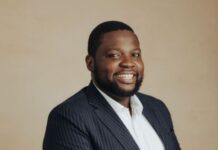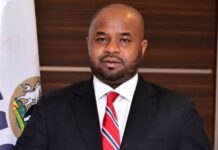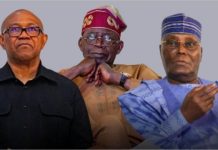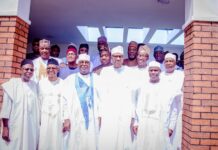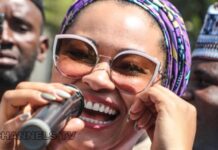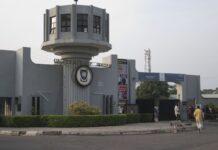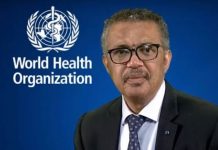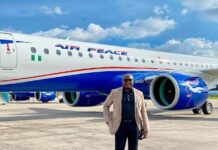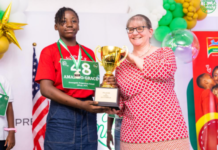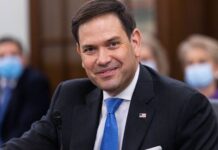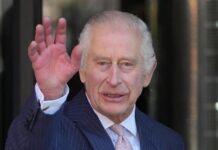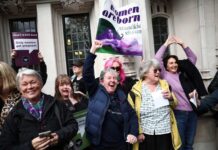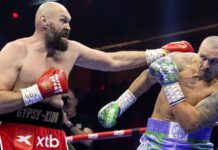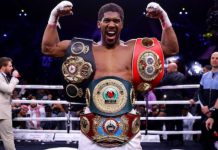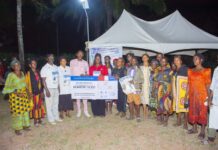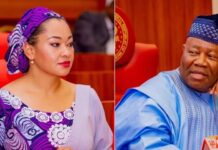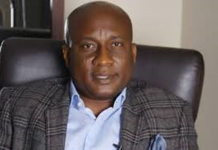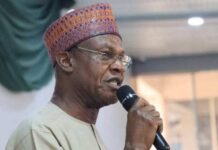The first Latin American pontiff, Pope Francis, died on Monday at the age of 88.
“At 7:35 this morning, the Bishop of Rome, Francis, returned to the home of the Father. His entire life was dedicated to the service of the Lord and of his Church,” Cardinal Kevin Farrell said in a statement.
Farrel added: “He taught us to live the values of the Gospel with fidelity, courage and universal love, especially in favour of the poorest and most marginalised.”
The Vatican also confirmed Francis died of a stroke that put him into a coma and led his heart to fail.
Bells tolled in Catholic churches from his native Argentina to the Philippines and across Rome as news spread around the world.
Francis, who suffered from chronic lung disease and had part of one lung removed as a young man, was admitted to Gemelli hospital on Feb. 14, 2025, for a respiratory crisis that developed into double pneumonia. He spent 38 days there, the longest hospitalization of his 12-year papacy.
He made his last public appearance on Easter Sunday — a day before his death — to bless thousands of people in St. Peter’s Square, drawing wild cheers and applause. Beforehand, he met U.S. Vice President JD Vance.
Francis performed the blessing from the same loggia where he was introduced on March 13, 2013, as the 266th pope.
Pope Francis’s body will be moved to the Chapel of Domus Sanctae Marthae, the Vatican guesthouse where he opted to live after becoming Pope, as opposed to the more lavish papal apartment used by his predecessors.
Cardinal Farrell – who holds the position of camerlengo, the cardinal who oversees the transition to a new Pope – will be joined by other senior church figures and Francis’s family later on Monday when he presides over the official confirmation of the pontiff’s death.
Francis will lie in state in St Peter’s Basilica, where mourners will be able to attend to pay their respects, before a funeral is held, which usually takes place within four to six days after a Pope dies.
The Pope requested that some elements of the elaborate death rites which usually take place after a pontiff’s death be dispensed with, including using an ornate coffin and displaying his body on a raised platform.
In his final testament, released by the Vatican late on Monday, he asked to be buried in Rome’s Basilica of St Mary Major. Many of his predecessors instead chose St Peter’s Basilica in the Vatican.
He wrote: “The tomb should be in the ground; simple, without particular ornamentation, bearing only the inscription: Franciscus.”
Francis’s death sets in motion the process of selecting a new Pope through an election known as a conclave, which typically takes place between 15 and 20 days after a Pope’s death.
The College of Cardinals – the Church’s most senior officials – will be summoned to Rome to take part in the secretive vote. In this case 135 cardinals – those aged under 80 – will be eligible to take part.
They will be shut in the Vatican until they reach an agreement, cut off from communicating with the outside world, in a process that can take days.
The outcome will set the direction of the Church, possibly for decades. The Pope appointed cardinals from a broader range of geographic and theological backgrounds than some of his successors, which could make the outcome of the process even more difficult to predict than usual.
Francis had endured bouts of ill-health in recent years, and was most recently discharged from Rome’s Gemelli Hospital on 23 March after being treated for pneumonia in both lungs.
The stay involved two “very critical episodes” which endangered his life, according to one of his doctors, and medics had advised a period of rest.
Francis continued to make some public appearances in his final weeks. Although the pontiff missed services on Good Friday and Holy Saturday, he did mark Holy Thursday with a traditional visit to Regina Coeli prison. However, he did not take part in the tradition of washing prisoner’s feet.
During his final public appearance on the balcony of St Peter’s basilica on Easter Sunday, Francis spoke briefly but did not recite a full blessing, instead inviting an archbishop to do so on his behalf.
Before he took the name Francis as his papal name, the Pope was called Jorge Mario Bergoglio
He was born on 17 December 1936 in Buenos Aires, Argentina, where his parents had fled to from their native Italy to escape fascism.
In 2013, Francis’s predecessor Benedict XVI became the first Pope to retire voluntarily in almost 600 years – and for almost a decade, the Vatican was home to two Popes.
Francis was chosen to succeed him during the conclave that followed Benedict’s departure, and became the first non-European Pope since Syrian-born Gregory III, who died in 741.
During his early life, Francis worked as a nightclub bouncer and floor sweeper, before graduating as a chemist.
Prior to being elected as Pope, Francis positioned himself as a compromise candidate by appealing to conservatives while attracting the reformers with his liberal stance on social justice.
His early actions as Pope included washing the feet of the elderly and prisoners and advocating for the rights of refugees and migrants.
But on many of the Church’s teachings, Pope Francis was a traditionalist.
He was at times supportive of some kind of same-sex unions for gay couples, but Francis did not favour calling it marriage. This, he said, would be “an attempt to destroy God’s plan”.
Shortly after becoming Pope, he took part in an anti-abortion march in Rome – calling for rights of the unborn “from the moment of conception”.
Francis’s papacy heralded many firsts, and while he never stopped introducing reforms to the Catholic Church, he remained popular among many traditionalists.
With agency reports


